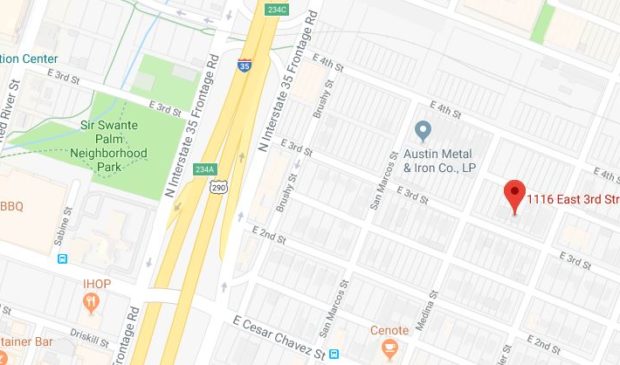East Austin ADU stalled at BoA
Tuesday, January 30, 2018 by
Elizabeth Pagano Over the past few years, the city has worked to make it easier to build accessory dwelling units. But, despite a chorus of those who tout the addition of a small secondary home as a way for homeowners to capitalize on development pressures and increase density without destroying “neighborhood character,” it’s not always simple to build them.
That was abundantly clear at the most recent meeting of the Board of Adjustment, where three separate ADU cases were stalled, including an attempt to facilitate construction adjacent to a transit-oriented development, just three blocks east of downtown.
Mason Moore and Jessica Braun were at the Board of Adjustment requesting three variances that would allow Garden Villas Roots LP to construct two homes and two accessory dwelling units at 1116 E. Third St. The variances would allow them to move forward with splitting the property into the originally platted two lots, decreasing the minimum lot size from the standard 5,750 square feet to 3,450 square feet and increasing the allowed floor area ratio from 0.15-to-1 to 0.2-to-1.
The variance requests are backed by the East Cesar Chavez Neighborhood Contact Team. In a letter of support, the group notes that the pair “presented a development plan that offers potentially less expensive housing options by designing smaller homes and distributing the cost of the land across 4 units.”
Braun agreed. She said the request was not a profit-driven one. She told the board that the changes would make the units more affordable and were not the best way to maximize the profit on the land.
“It’s worth pointing out that the lots on the block are also narrow lots,” said Braun. She told the board that the project would follow an established precedent, not create one. That said, she explained that the neighborhood, which is blocks away from downtown, has a mix of commercial, industrial, single-family and multifamily uses.
The property is currently zoned Family Residence (SF-3). Moore and Braun explained that they did not own the property during the time that they could have opted to be included in the transit-oriented development, which has more relaxed development standards. Chair William Burkhardt said he was “intrigued” by their choice to pursue variances rather than a rezoning.
Braun reasoned that “restoring the original lots seemed like a smaller ask than a rezone.” And, even if the property was rezoned, breaking the lot into the originally platted land would require a variance from the board.
However, unlike a rezoning, variances require proof of a hardship in order to be granted. Board members voted to postpone the case to their Feb. 12 meeting in order to figure out a hardship that would justify the exceptions from the code.
Board Member Eric Goff encouraged the applicants to research their hardship more thoroughly.
“I think this is a good project; it makes sense. But to meet the standard, you have to have a clear hardship,” said Goff.
Board Member Bryan King said he would also need to hear a clear reason why they were not pursuing a rezoning before he would support the variance.
Moore explained that the portions of the city code that they were seeking a variance from “create a hardship by preventing this site from being developed in a way that would better match the density that already exists in this area” and make the best use of the site. He further explained that if the property were developed under the existing constraints on the site, it would soon look out of scale, given the rapid pace of development in the area.
That hardship was rejected by the board, as was an attempt by Braun.
“You don’t think being adjacent to an apartment building is a hardship for a single-family lot?” asked Braun. “It has a lot of impact.”
Board Member Brooke Bailey said that would not, in fact, qualify as a hardship as it was a common condition in Central Austin.
The Austin Monitor’s work is made possible by donations from the community. Though our reporting covers donors from time to time, we are careful to keep business and editorial efforts separate while maintaining transparency. A complete list of donors is available here, and our code of ethics is explained here.
You're a community leader
And we’re honored you look to us for serious, in-depth news. You know a strong community needs local and dedicated watchdog reporting. We’re here for you and that won’t change. Now will you take the powerful next step and support our nonprofit news organization?









